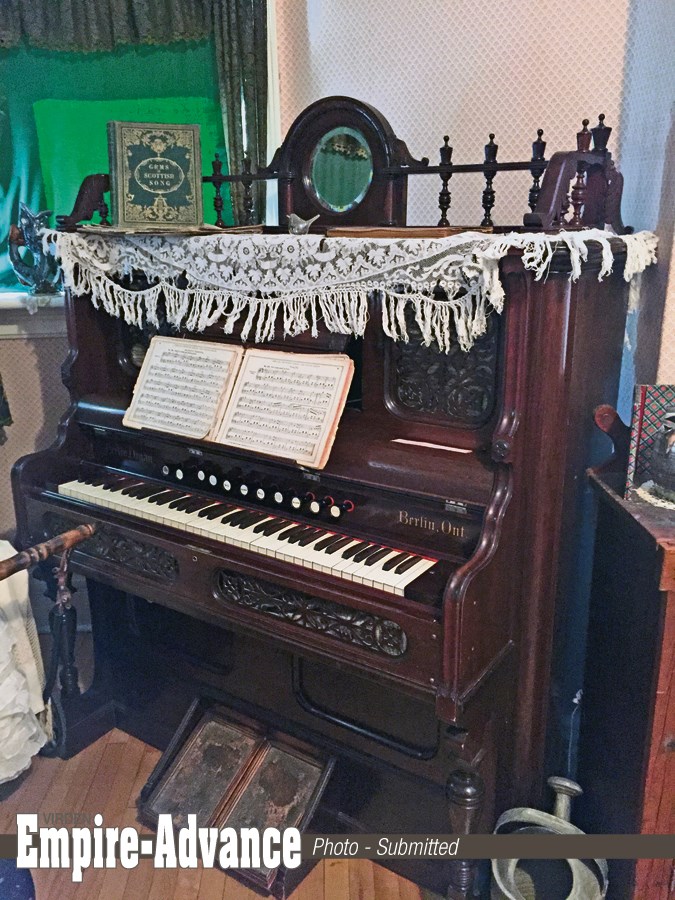The pump organ was a pipe-free organ commonly found in homes and churches in the 19th century. It was more compact and took up less space than the average pipe organ that can be found in several cathedrals and churches today. Therefore, it was a wonderful addition to the home of a high class Victorian.
In 1840, the first form of the pump organ was invented by Alexandre Debain of France. The harmonium he invented was considered ideal for churches that could not afford the large expensive pipe organs of their time. Pump organs reached the height of their popularity in the late 19th and early 20th century.
The sound a pipe organ makes is generated by air flow though the thin metal that makes up the frame of the organ. The metal pieces creating the sound are called reeds. The vibration on the reeds as you continuously pump the foot pedal create the air flow that is needed to play the organ.
In the museum, we have a pump organ that was originally manufactured in Berlin, Ontario by the Berlin Piano and Organ Company. The name Berlin, Ontario is printed on the organ and this dates it as pre 1916. Berlin, Ontario became Kitchener, Ontario in 1916 after the Canadian government did not want any correlation with Germany in Canada during World War I. This year marks the 100th anniversary of the name change of Berlin, Ontario. Delightfully this wonderful asset to the museum is still in working condition.




